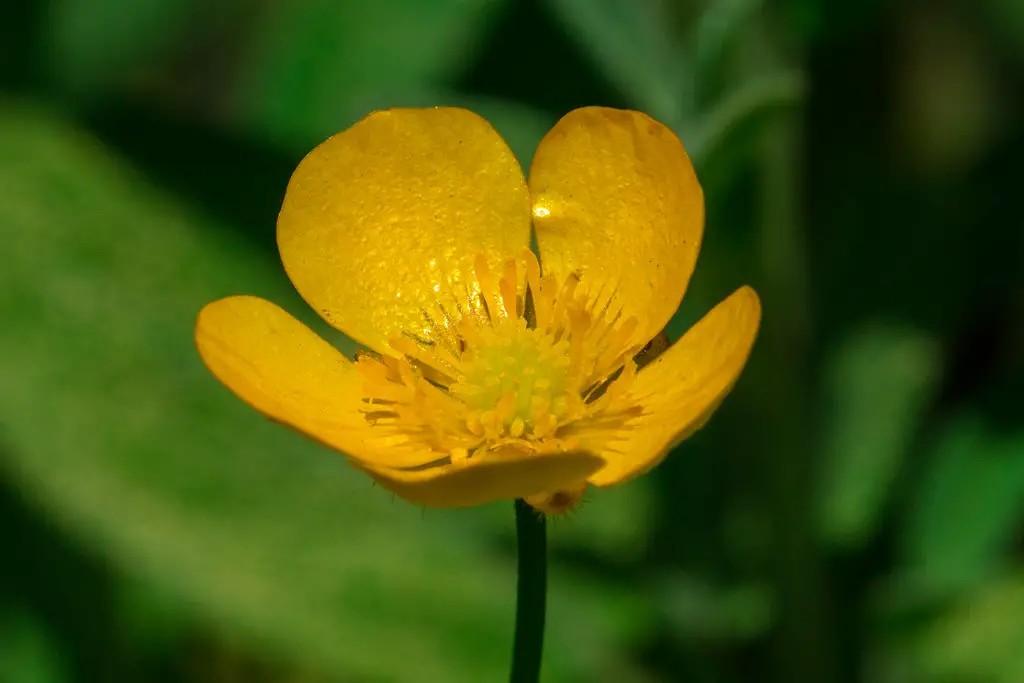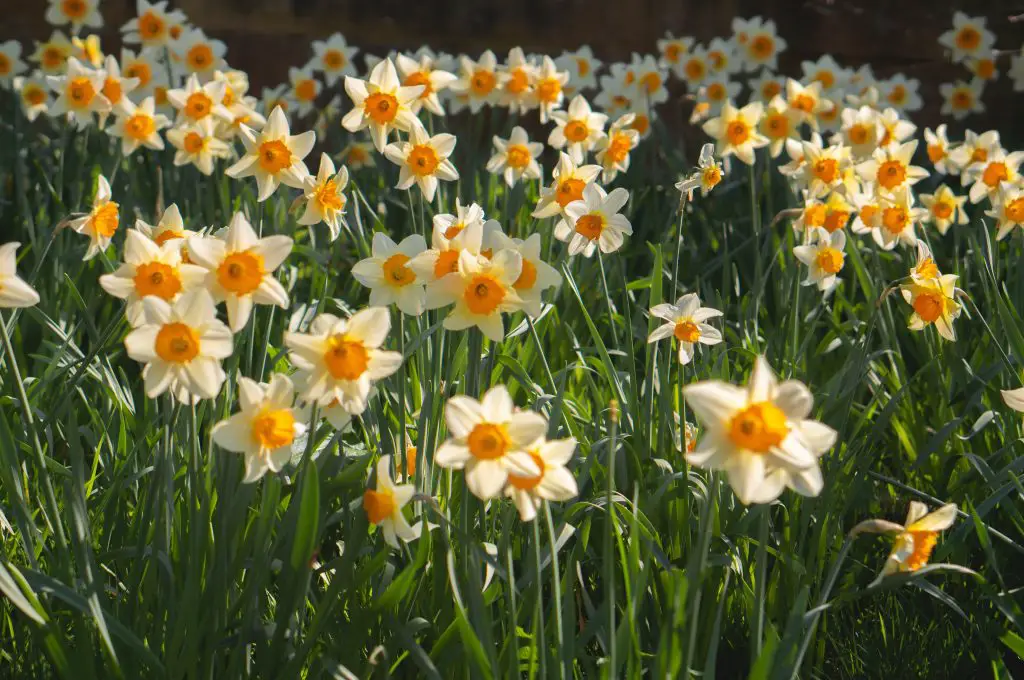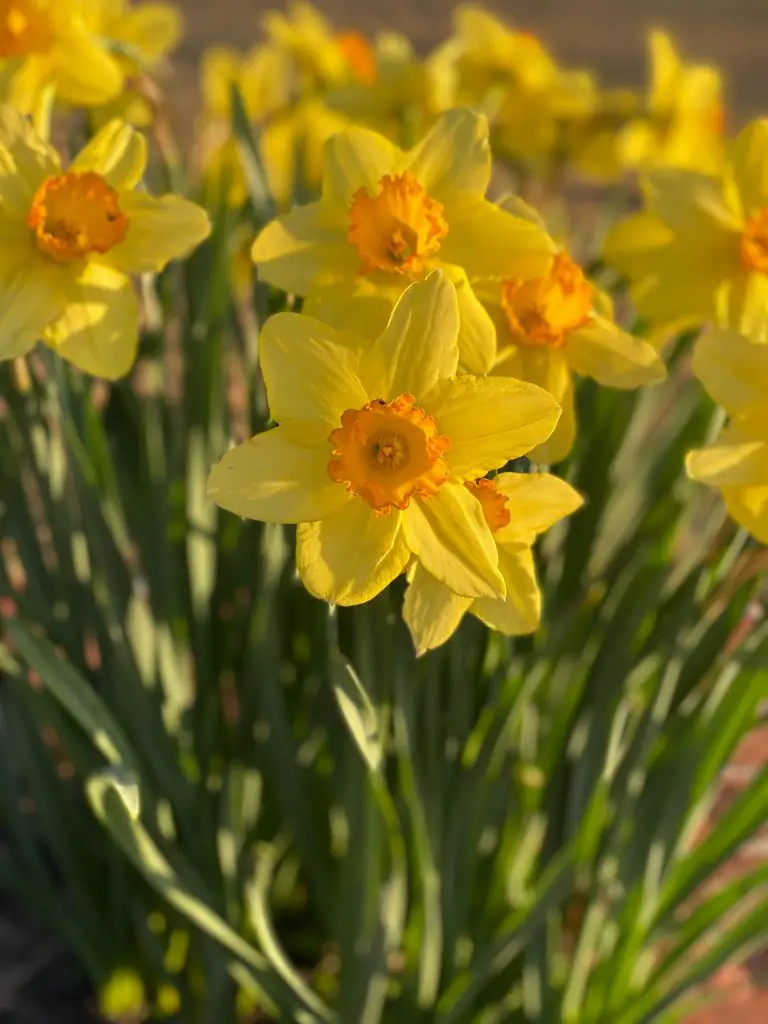What Is The Difference Between Daffodils And Buttercups? Are They The Same Thing? Daffodils and Buttercups are some of the most beautiful spring flowers that appear in your garden however both are yellow flowers so are they just different names for the same thing? If not what’s the difference?
Daffodils and buttercups are completely different flowers from different genera of plants despite their similar appearance. They flower at different times with daffodils flowering in early to late spring whereas buttercups produce flowers in summer. The other important distinctive feature is that buttercups unknown to be extremely invasive and will spread throughout your garden where is daffodils generally keep to themselves.
The buttercup flowers come from the genus ranunculus and have 5 yellow petals on each flower with rounded edges whereas the Daffodils have five pointed petals on each flower with a distinctive central Trumpet coming out from the flower.

The additional difference between running buttercups is that they have prostate running stems that produce roots and plant nodes making them spread rapidly as well as more erect leaves that will produce the flowers. The erect stems can reach a height of approximately 10 inches tall in some cases.
The plant is a very common weed in gardens across the northern part of Europe as they spread quickly and are extremely difficult to eradicate because they have deep roots. They are very common in relatively damp areas where it regular floods.
How Do You Control Creeping Buttercups?
The RHS recommends several different measures depending upon the severity of the infestation which will help to reduce the spread of the plant. Creeping buttercups can invade both lawns and borders and there are different measures that are recommended depending on where the plant pops up.
In the case of lawns, it is recommended in early spring to use a wire rake to scratch the surface of the grass to help lift and remove any developing runners that can then be cut by the mower and removed. Additionally, as these plants do like relatively damp conditions it is best to aerate the soils in autumn to ensure that the level of drainage through the lawn is maximized to provide less favorable conditions.

In borders where the plants have popped up here and there, you can manually dig out the young plants and runners with a trowel in early spring. Getting them before they flower is quite important as it will reduce the level of the spread making the plants easier to control. However, it is quite likely that you will need to repeat this process several times to ensure that the buttercups are eliminated.
However, if there are thick aggressive infestations in your border is it may be necessary to lift out the plants that you want to keep from that area and ensure that there is no runners or roots from the buttercups carried with the plants to ensure that they do not spread further.
Once you are left with only the buttercup plants the best method is to put a black plastic sheet over the area and leave it there for the entire summer and possibly throughout the winter to starve the plant of light. Alternatively, if you want to kill the buttercups with chemicals a glyposate-based weed killer such as Roundup is effective.
However, it is important to note that glyphosate weed killers are not selective in any way which means that any plants that the spray comes into contact will be killed. To ensure that you do not accidentally kill things unintentionally it is best to apply the spray on a still day and ensure that any shoots of desirable plants nearby are protected.

How To Grow Daffodils
Daffodils on the other hand are an extremely easy plant to grow and produce a fantastic display throughout spring provided that you select both early mid and late-season varieties. Additionally, they have none of the problems associated with creeping buttercup which can be extremely problematic.
If you were growing daffodils for the first time they need to be planted in autumn to ensure that the bulbs are exposed to a period of cold to maximize their ability to flower. When selecting a location to grow the Daffodils in it is best to choose a sunny location that has relatively free draining soil with plenty of nutrients as daffodils do not like sitting in water for extended periods of time.
When planting the bulbs they should ideally be placed at a depth of approximately 2 to 3 inches in the ground. The easiest way to do this if you are planting lots of daffodils is to use an upright bulb planter as it will be easier on your back. To see the latest price click on the link to visit Amazon
In terms of positioning the bulbs to make them look natural one of the methods commonly recommended by Monty Don is to simply take the Daffodils that you’ve purchased and throw them onto the ground in the area and plant them with they land. This gives them a random arrangement that looks more natural.

Once they are planted in the ground there’s very little else to do other than to wait for the flowers in early spring. The flower heads can then be removed from the plant once they have finished, however, it is important not to remove the foliage because that needs to continue to photosynthesize. The reason for this is because the photosynthesis creates sugars which are stored in the bulb for next year’s flowers.
Over time you’ll find that the bulbs will multiply, however, as they become too crowded you will tend to find that the number of flowers produced will reduce after a couple of years. At this stage, the bulbs will need to be dug up and divided. It is best to do this when the foliage has died back but can still be seen so that you know precisely where the bulbs actually are.
I hope you have great success with the flowers that you choose to put into your garden, if you have any additional questions or comments please leave them in the section below.
Relevant Articles
Are Daffodils Edible? Are They Safe To Eat?
How To Tell When Daffodils Are Ready To Harvest?
Is Lavender Deer Resistant? Can You Use Them To Protect Your Garden
